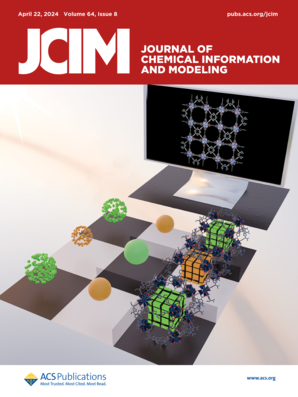MMF-MCP: A Deep Transfer Learning Model Based on Multimodal Information Fusion for Molecular Feature Extraction and Carcinogenicity Prediction.
IF 5.6
2区 化学
Q1 CHEMISTRY, MEDICINAL
引用次数: 0
Abstract
Molecular carcinogenicity is a crucial factor in the development of cancer, and accurate prediction of it is vital for cancer prevention, treatment, and drug development. In recent years, deep learning has been applied to predict molecular carcinogenicity, but due to limitations in data quality and feature richness, these methods still need improvement in terms of accuracy, robustness, and interpretability. In this article, we propose a deep transfer learning model based on multimodal information fusion, called MMF-MCP, for molecular feature extraction and carcinogenicity prediction. We extract molecular graph features and fingerprint features using graph attention networks and convolutional neural networks, respectively, and process molecular images through a deep residual network, SE-ResNet18, equipped with a squeeze-and-excitation module. To more effectively utilize limited carcinogenicity data and enhance the model's predictive performance and generalization ability, we further apply a transfer learning strategy by pretraining the model on a molecular mutagenicity data set and then fine-tuning it on the carcinogenicity data set, enabling knowledge transfer and significant improvement in model performance. MMF-MCP achieves average ACC, AUC, SE, and SP scores of 0.8452, 0.8513, 0.8571, and 0.8333 on benchmark data sets for molecular carcinogenicity, significantly outperforming state-of-the-art molecular carcinogenicity prediction methods. Additionally, the visualization results of MMF-MCP on molecular images demonstrate its strong interpretability, providing significant assistance in visually observing and understanding the critical structures and features of molecular carcinogenicity. The source code for MMF-MCP is available at https://github.com/liuliwei1980/MCP.MMF-MCP:基于多模态信息融合的分子特征提取和致癌性预测的深度迁移学习模型。
分子致癌性是癌症发生发展的关键因素,准确预测分子致癌性对癌症的预防、治疗和药物开发至关重要。近年来,深度学习已被应用于分子致癌性预测,但由于数据质量和特征丰富度的限制,这些方法在准确性、鲁棒性和可解释性方面仍有待提高。在本文中,我们提出了一种基于多模态信息融合的深度迁移学习模型MMF-MCP,用于分子特征提取和致癌性预测。我们分别使用图注意网络和卷积神经网络提取分子图特征和指纹特征,并通过配备挤压激励模块的深度残差网络SE-ResNet18处理分子图像。为了更有效地利用有限的致癌性数据,提高模型的预测性能和泛化能力,我们进一步应用迁移学习策略,在分子诱变性数据集上对模型进行预训练,然后在致癌性数据集上对模型进行微调,从而实现知识转移,显著提高模型性能。MMF-MCP在分子致癌性基准数据集上的平均ACC、AUC、SE和SP得分分别为0.8452、0.8513、0.8571和0.8333,显著优于目前最先进的分子致癌性预测方法。此外,MMF-MCP在分子图像上的可视化结果显示其具有很强的可解释性,为直观观察和理解分子致癌性的关键结构和特征提供了重要的帮助。MMF-MCP的源代码可从https://github.com/liuliwei1980/MCP获得。
本文章由计算机程序翻译,如有差异,请以英文原文为准。
求助全文
约1分钟内获得全文
求助全文
来源期刊
CiteScore
9.80
自引率
10.70%
发文量
529
审稿时长
1.4 months
期刊介绍:
The Journal of Chemical Information and Modeling publishes papers reporting new methodology and/or important applications in the fields of chemical informatics and molecular modeling. Specific topics include the representation and computer-based searching of chemical databases, molecular modeling, computer-aided molecular design of new materials, catalysts, or ligands, development of new computational methods or efficient algorithms for chemical software, and biopharmaceutical chemistry including analyses of biological activity and other issues related to drug discovery.
Astute chemists, computer scientists, and information specialists look to this monthly’s insightful research studies, programming innovations, and software reviews to keep current with advances in this integral, multidisciplinary field.
As a subscriber you’ll stay abreast of database search systems, use of graph theory in chemical problems, substructure search systems, pattern recognition and clustering, analysis of chemical and physical data, molecular modeling, graphics and natural language interfaces, bibliometric and citation analysis, and synthesis design and reactions databases.

 求助内容:
求助内容: 应助结果提醒方式:
应助结果提醒方式:


